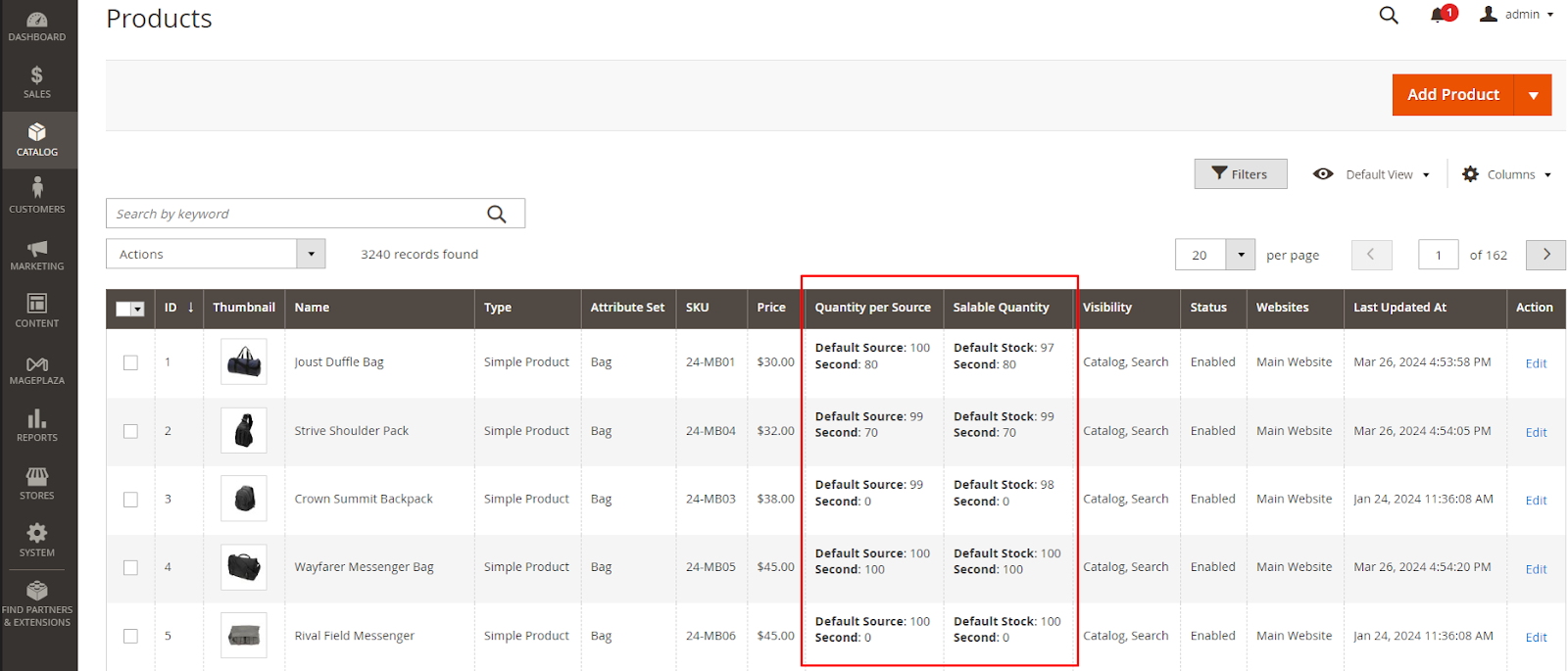Salable Quantity in Magento 2: Definition and Comparision

Ever wondered why the quantity of a product in your Magento 2 store doesn’t always reflect what’s actually available for purchase? That’s where “Salable Quantity” comes in – a feature introduced in Magento 2.3 to provide a more accurate picture of your inventory.
This article will explain what Salable Quantity is and how it differs from the traditional “Quantity” in Magento 2. We’ll also explore the reasons behind this change and how it impacts your inventory management. Let’s check it out!
What is Magento 2 Salable Quantity?
Salable Quantity in Magento 2 refers to the total amount of products available for sale across all your inventory sources. This quantity decreases when orders are placed by customers, indicating the sold items. Conversely, if an order is canceled, the products are returned to the salable quantity, making them available for sale again. Essentially, the salable quantity represents the total count of items that are available for purchase.

When managing products in Magento 2, you can easily view the Salable Quantity column alongside the Quantity per Source column in the product grid under Catalog > Products. This column provides a quick overview of the available quantity for each product, streamlining inventory management and sales monitoring processes.
Salable Quantity vs. Quantity per Source in Magento 2
In Magento 2, there are two key inventory metrics: Salable Quantity and Quantity per Source, each serving distinct purposes in managing stock levels.
- Salable Quantity: Salable Quantity refers to the actual quantity of a product available for sale at any given time. When a customer places an order, the Salable Quantity decreases immediately, reflecting the reduction in available stock.
- Quantity per Source: Quantity per Source represents the stock available in individual sources or locations. Unlike Salable Quantity, Quantity per Source remains unchanged when orders are placed. It only updates after the order is shipped from the respective source.
Here is an example table comparing Salable Quantity and Quantity per Source in Magento 2 based on the information in the image:

- In the example above, the Joust Duffle Bag has a Salable Quantity of 97. This means that there are 97 Joust Duffle Bags available for sale in total. The ‘Quantity per Source’ column shows that there are 100 in the Default Source and 80 in the Second Source.
- With Joust Duffle Bag, if a customer orders 5 bags, the Salable Quantity will decrease from 97 to 92 but the Quantity per Source remains the same. When those 5 bags are successfully shipped to the buyer, the Quantity per Source will decrease from 100 to 95.
Note: The Salable Quantity will update whenever an order is placed. The ‘Quantity per Source’ will only update when the order is shipped.
From the definition and example that we have explained to you, now here is an overview table comparing Salable Quantity and Quantity per Source in Magento 2:
| Metric | Salable Quantity | Quantity per Source |
|---|---|---|
| Definition | Actual quantity available for sale | Stock available in individual sources or locations |
| Behavior | Decreases immediately after order placement | Decrease after order is successfully shipped |
| Use Case | Manages overall stock availability | Manages stock levels per source for efficient fulfillment |
| Example | After order placement, the Salable Quantity decreases | Quantity per Source remains the same until shipment |
Final Words
In conclusion, Salable Quantity plays a crucial role in Magento 2 inventory management by representing the actual quantity of products available for sale at any given time. Unlike Quantity per Source, which tracks stock levels in individual sources or locations, Salable Quantity directly reflects the immediate impact of customer orders on available stock.
Understanding Salable Quantity is essential for e-commerce businesses using Magento 2, as it provides real-time insights into stock availability, aids in preventing stockouts, and facilitates efficient order fulfillment. By leveraging Salable Quantity effectively, businesses can optimize their inventory management strategies, enhance customer satisfaction, and improve overall operational efficiency within their Magento 2 stores





![Top 20+ Must-have Shopify Apps for 2025 [Free & Paid] - Mageplaza](https://cdn2.mageplaza.com/media/blog/must-have-shopify-apps/top-must-have-shopify-apps.png)
![[2025 Updates] Top 10+ Upsell Apps for Shopify - Mageplaza](https://cdn2.mageplaza.com/media/blog/best-upsell-shopify-app/cover.png)